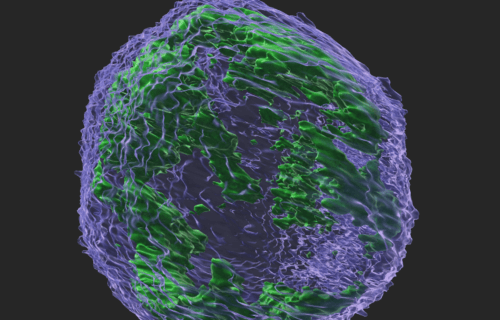NEW YORK — A protein that protects the body against retroviruses like HIV is actually a double-edged sword, biologists warn. A recent cell study found the APOBEC3G enzyme can also increase the risk that cancer evolves. The enzyme is thought to help with cancer formation by increasing the number of mutations in tumor cells. The mutations allow for the genetic diversity of bladder tumors that make them more difficult to destroy.
“Our findings suggest that APOBEC3G is a big contributor to bladder cancer evolution and should be considered as a target for future treatment strategies,” says Bishoy Faltas, an oncologist and assistant professor of cell and developmental biology at Weill Cornell Medicine, in a university release.
APOBEC3G enzymes are effective in warding off viruses by stopping them from cloning themselves. They are able to inhibit viral replication by mutating the cytosines — the letter “C” in the genetic code. However, these cellular mutations can create lasting alterations in the genetic code, introducing errors long after the virus is gone. The risky actions taken by this family of enzymes suggest there must be mechanisms in place to stop them from causing extensive damage to DNA.
The idea that these enzymes could promote cancer formation started about a decade ago. New DNA-sequencing techniques allowed biologists to have a more in-depth look into the DNA of cancer cells. In a 2016 study, Dr. Faltas found most mutations in bladder tumors were related to changes caused by the APOBEC3G enzymes. What’s more, the genetic mutations the enzyme produced seemed to have helped tumors survive during chemotherapy treatments.
The previous findings suggest cancers take advantage of APOBEC3 enzymes to create more mutations. Not only would these mutations fuel cancer growth but they may also help with evading detection from the immune system and cancer drugs.
The enzyme nearly doubled the risk of cancer in mice
In the current study, the study authors used mice to test whether APOBEC3G directly causes bladder cancer. Mice were an ideal model because the APOBEC3G enzyme is only found in humans. They started by knocking out the sole APOBEC3-type enzyme in mice and replaced it with the human APOBEC3G gene. Mice were then exposed to a bladder cancer-promoting chemical that is similar to the ones found in cigarette smoke.
Mice with the APOBEC3G gene were 76 percent more likely to develop bladder cancer compared to the 56 percent of mice who had their APOBEC gene knocked out but not replaced. After 30 weeks, all the knockout-only mice survived. About one-third of mice carrying the human gene died of cancer.
The reason behind the difference in mortality rates is that APOBEC3G mice showed twice as many mutations compared to the tumors in knockout-only mice.
“We saw a distinct mutational signature caused by APOBEC3G in these tumors that is different from signatures caused by other members of the APOBEC3 family” adds study author Weisi Liu, a postdoctoral research associate.
The authors suggest the mutations increased the genomic diversity of tumors to grow and prosper. Lastly, the researchers combed through a large human tumor database called The Cancer Genome Atlas and found a connection between APOBEC3G-related mutations and worse outcomes from bladder cancer.
“These findings will inform future efforts to restrict or steer tumor evolution by targeting APOBEC3 enzymes with drugs,” concludes Dr. Faltas.
The study is published in the journal Cancer Research.

